9 Best Herbal Tinctures For Low Sperm Count
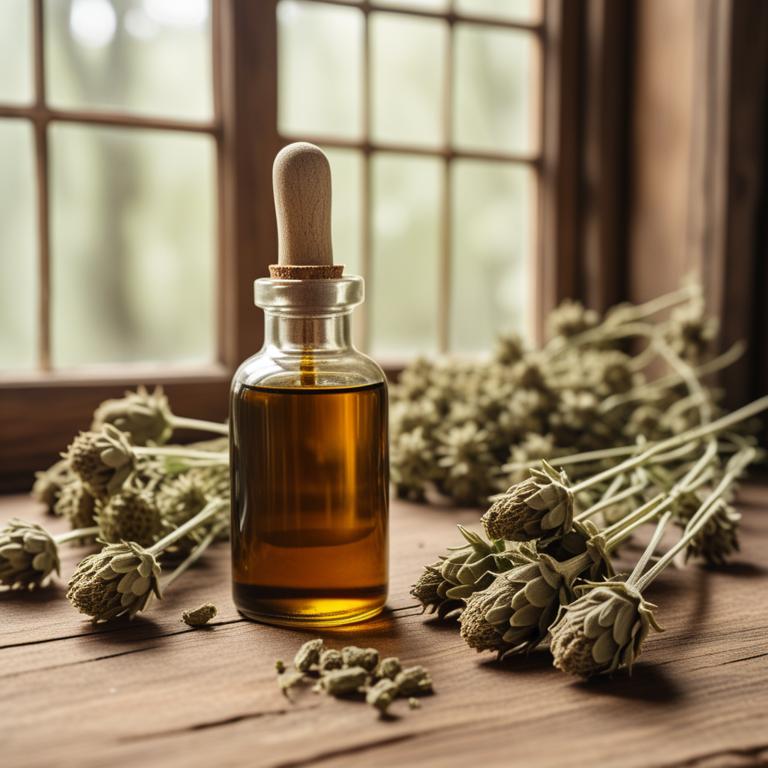
Herbal tinctures for low sperm count are natural liquid extracts made from plants that have been traditionally used to enhance male fertility and improve sperm count.
These herbal tinctures offer several benefits, including reducing stress and anxiety, improving overall health, and increasing sperm quality and motility.
Some examples of herbal tinctures used to treat low sperm count include Ashwagandha, which helps reduce stress and improve sperm quality; Tribulus Terrestris, which increases testosterone levels and improves sperm count; Maca, which balances hormones and improves fertility; Fenugreek, which increases sperm count and motility; and Ginkgo Biloba, which improves blood flow to the reproductive organs and enhances sperm quality.
Additionally, other herbal tinctures such as Saw Palmetto, Cinnamon, and Red Clover have also been found to be beneficial in improving sperm count and overall fertility.
According to "JBRA assisted reproduction", tinctures for low sperm count may potentially be effective using herbal extracts from plants such as Apium graveolens, Cinnamomum camphora, Cornus mas, Satureja khuzestanica, Withania somnifera, Fumaria parviflora, zingiber officinale, cinnamomum zeylanicum and Phoenix dactylifera due to their antioxidant properties and low side effects.
Below there's a list of the 9 best herbal tinctures for low sperm count.
- 1. Tribulus terrestris tinctures
- 2. Eurycoma longifolia tinctures
- 3. Ginkgo biloba tinctures
- 4. Panax ginseng tinctures
- 5. Curcuma longa tinctures
- 6. Zingiber officinale tinctures
- 7. Citrullus lanatus tinctures
- 8. Panax quinquefolius tinctures
- 9. Withania somnifera tinctures
Also you may be interested in...
TODAY'S FREE BOUNDLE
Herb Drying Checklist + Herbal Tea Shopping List + Medicinal Herbs Flashcards
Enter you best email address below to receive this bundle (3 product valued $19.95) for FREE + exclusive access to The Aphotecary Letter.
$19.95 -> $0.00
1. Tribulus terrestris tinctures
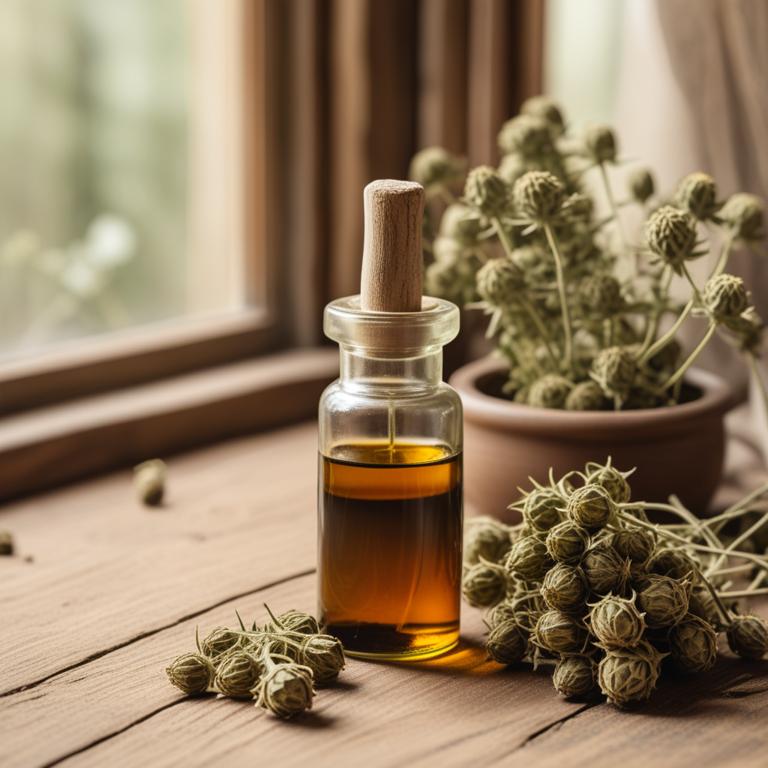
Tribulus terrestris tinctures have been traditionally used to treat low sperm count due to their aphrodisiac and adaptogenic properties, which help to improve sperm quality and quantity.
The bioactive constituents present in Tribulus terrestris, such as saponins, flavonoids, and alkaloids, are believed to stimulate the production of testosterone, the primary male sex hormone responsible for sperm production.
By increasing testosterone levels, Tribulus terrestris tinctures may help to improve sperm count, motility, and morphology, ultimately aiding in the treatment of low sperm count.
The benefits of using Tribulus terrestris tinctures to treat low sperm count include improved fertility, enhanced libido, and increased overall reproductive health.
Related Study
According to "Andrologia", Tribulus terrestris tinctures for low sperm count may be beneficial as they increased sperm concentration when combined with Lepidium meyenii at certain doses, specifically with 75 and 50 mg/kg of Tribulus terrestris and 0.25 and 0.5 g/kg of Lepidium meyenii.
2. Eurycoma longifolia tinctures
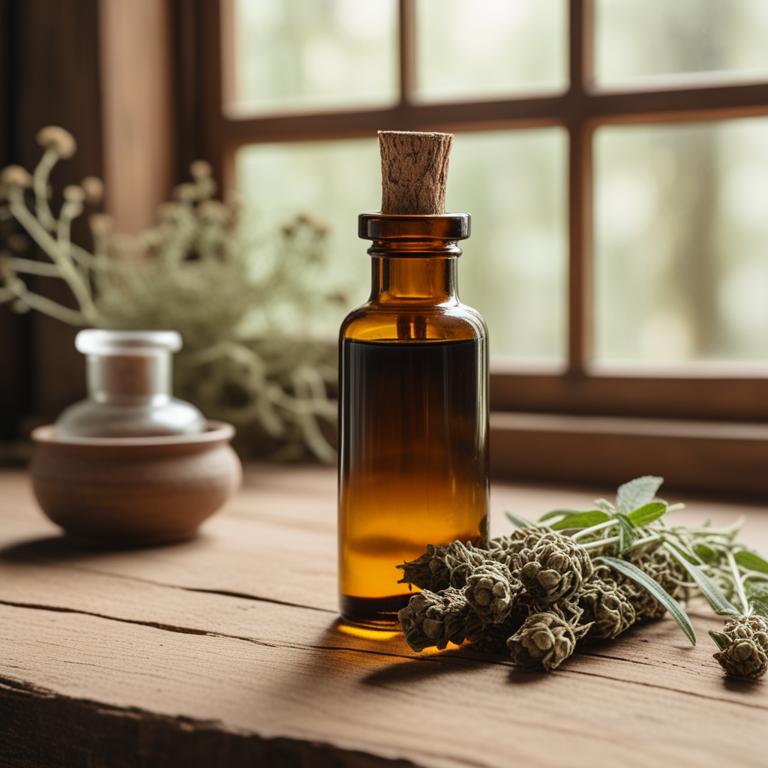
Eurycoma longifolia tinctures have been traditionally used to treat low sperm count, a common issue affecting fertility in men.
The properties of this herbal preparation, including its anti-inflammatory and antioxidant properties, help to improve sperm quality and count by reducing oxidative stress and inflammation in the testes.
The bioactive constituents of Eurycoma longifolia, such as flavonoids and alkaloids, particularly the compound eurycomanone, have been shown to have spermatogenic and androgenic activities, which help to stimulate sperm production and improve fertility.
Regular use of Eurycoma longifolia tinctures has been reported to increase sperm count, improve sperm motility, and enhance overall fertility in men.
Related Study
According to the study, Eurycoma longifolia tinctures, also known as long Jack, are supported by moderate evidence to increase total testosterone levels and improve seminal parameters, including increasing sperm count in men with low sperm count.
3. Ginkgo biloba tinctures

Ginkgo biloba tinctures have been researched for their potential in treating low sperm count due to their antioxidant, anti-inflammatory, and vasodilatory properties.
These properties help to improve blood flow to the reproductive system, promoting a healthy environment for sperm production and motility.
The bioactive constituents, including flavonoids and bilobalide, may help to reduce oxidative stress and inflammation, thereby enhancing sperm quality and count.
Regular use of Ginkgo biloba tinctures may also benefit men with low sperm count by improving sperm morphology, motility, and overall fertility, making it a potential natural remedy for this condition.
4. Panax ginseng tinctures
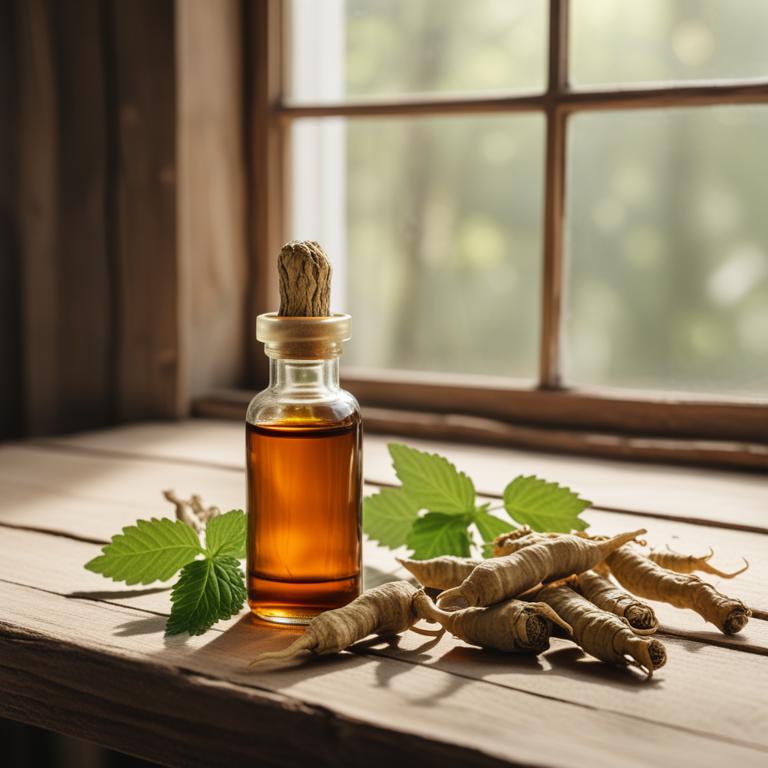
Panax ginseng tinctures have been traditionally used to treat low sperm count, a condition characterized by a reduced number of sperm in the ejaculate.
The properties of this herbal preparation, including its adaptogenic and antioxidant properties, help to counteract oxidative stress and inflammation, which can contribute to low sperm count.
The bioactive constituents of Panax ginseng, such as ginsenosides and saponins, are believed to play a crucial role in enhancing sperm quality and motility, thereby improving fertility.
By using Panax ginseng tinctures, individuals may experience benefits such as increased sperm count, improved sperm motility, and enhanced overall reproductive health.
Related Study
According to "Arzneimittel-Forschung", Panax ginseng tinctures for low sperm count may be beneficial as in vitro studies suggest that fraction 4 of the extract from the roots of Panax ginseng stimulates DNA and protein syntheses in testes.
5. Curcuma longa tinctures

Curcuma longa tinctures have been traditionally used to treat low sperm count due to their anti-inflammatory and antioxidant properties.
The bioactive constituents of Curcuma longa tinctures, including curcumin, demethoxycurcumin, and bisdemethoxycurcumin, help to reduce oxidative stress and inflammation in the testes, thereby promoting healthy sperm production.
The anti-inflammatory properties of Curcuma longa tinctures help to alleviate conditions such as epididymitis and orchitis, which can contribute to low sperm count.
By reducing inflammation and oxidative stress, Curcuma longa tinctures can help to improve sperm quality and count, making them a potential natural remedy for low sperm count.
6. Zingiber officinale tinctures

Zingiber officinale tinctures, derived from the root of the ginger plant, have been used in traditional medicine to treat low sperm count, a common issue affecting male fertility.
The bioactive constituents of Zingiber officinale, including gingerols and shogaols, possess anti-inflammatory and antioxidant properties that help to improve sperm quality and count by reducing oxidative stress and inflammation in the testes.
The tinctures also help to enhance sperm motility and increase the chances of successful fertilization by stimulating the production of testosterone, a hormone essential for reproductive health.
Regular use of Zingiber officinale tinctures has been associated with improved sperm count, motility, and morphology, making it a potential natural remedy for low sperm count and related fertility issues.
Related Study
According to "JBRA assisted reproduction", Zingiber officinale tinctures for low sperm count may be beneficial due to its antioxidant properties, which can help increase fertility with low side effects.
7. Citrullus lanatus tinctures

Citrullus lanatus tinctures, derived from the African horned melon, have been traditionally used to treat low sperm count in men.
The tincture's properties, including its high water content and antioxidant properties, help to improve sperm quality by protecting the sperm from oxidative stress and damage.
The bioactive constituents present in Citrullus lanatus tinctures, such as citrulline and cucurbitacins, have been shown to have spermatogenic and antioxidant effects, promoting healthy sperm production and motility.
By consuming Citrullus lanatus tinctures, individuals can benefit from improved fertility and reduced risk of infertility due to low sperm count.
8. Panax quinquefolius tinctures
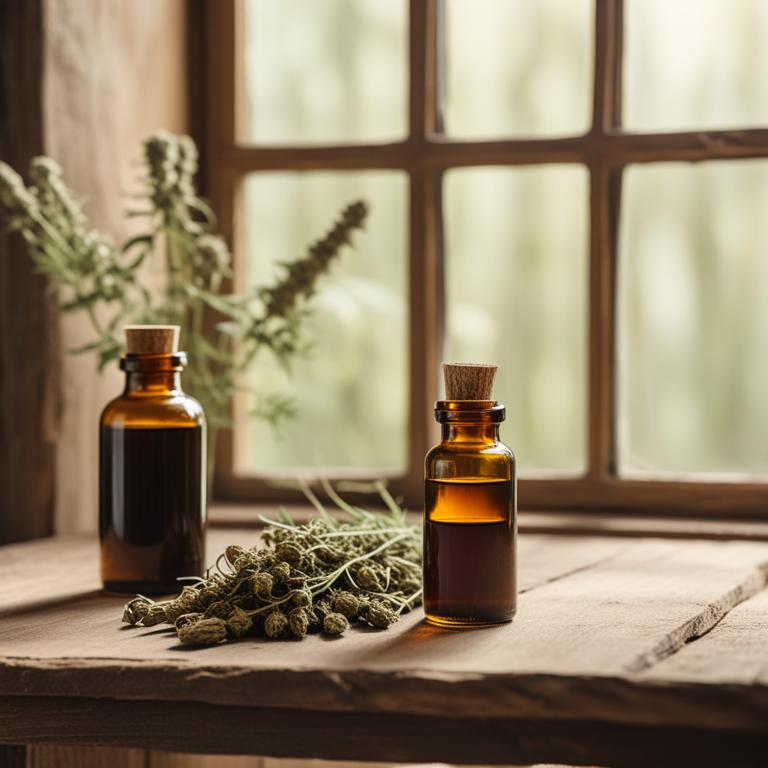
Panax quinquefolius tinctures, also known as American ginseng tinctures, have been traditionally used to treat low sperm count due to its adaptogenic and tonic properties that help to balance the body's hormonal and nervous systems.
The bioactive constituents of Panax quinquefolius tinctures, including ginsenosides and saponins, are believed to help improve sperm count by enhancing sperm motility and increasing testosterone levels in the body.
The benefits of using Panax quinquefolius tinctures to treat low sperm count include improved fertility, enhanced libido, and overall reproductive health.
By supporting the body's natural hormonal balance and improving sperm quality, Panax quinquefolius tinctures may help to increase the chances of conception in individuals with low sperm count.
9. Withania somnifera tinctures
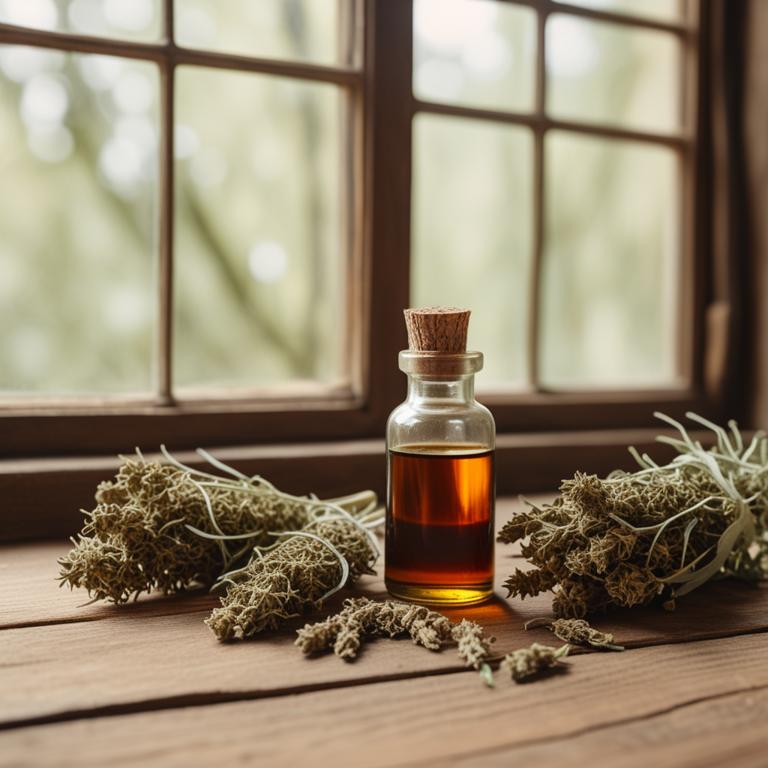
Withania somnifera tinctures have been traditionally used to treat low sperm count due to its adaptogenic properties, which help to reduce oxidative stress and inflammation in the body.
The bioactive constituents of Withania somnifera, including withanolides and steroidal lactones, have been shown to improve sperm quality and increase sperm count by enhancing antioxidant defenses and modulating the hypothalamic-pituitary-gonadal axis.
Regular use of Withania somnifera tinctures may also help to improve fertility by reducing stress and anxiety, which are known to negatively impact sperm count and quality.
The benefits of using Withania somnifera tinctures to treat low sperm count include improved sperm count, motility, and morphology, as well as enhanced overall reproductive health.
Related Study
According to the provided study, Withania somnifera tinctures were found to be effective in treating low sperm count as part of the herbal remedies studied, with no serious side effects reported.